ITALIANO
Venezia è un "Grande pesce". No, non stiamo parlando del famoso film di Tim Burton "Big Fish".
Avete mai visto Venezia dall'alto? Assomiglia proprio ad un grande pesce.
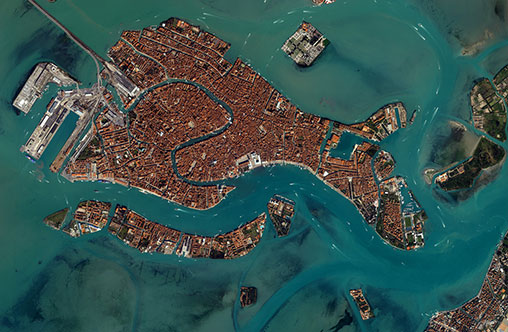
Questa particolare forma è del tutto casuale.
L'ACQUA ALTA
A VENEZIA
Con il termine di acqua alta sono indicati nella laguna di Venezia picchi di marea particolarmente pronunciati, tali da provocare allagamenti nell'area urbana. Il fenomeno è frequente soprattutto nel periodo compreso tra l'autunno e la primavera, quando l'alta marea arriva ad allagare buona parte della città rendendo difficili gli spostamenti per calli e campi.
Il fenomeno dell'acqua alta è generato dalla combinazione di due fattori principali: l'alternarsi regolare delle maree unita ad una causa meteorologica composta dalla combinazione di vento e pressione atmosferica sulla massa marina; l'alta marea da sola non genera l'acqua alta: è la sovrapposizione di questi fattori che, combinandosi con la marea astronomica, porta il livello dell'acqua a raggiungere quote superiori in modo meno prevedibile. Il rialzo dell'acqua oltre il livello di marea è un fenomeno normale in un bacino chiuso come il mare Adriatico ed il vento che lo favorisce non è tanto la bora, comune a Venezia, ma lo scirocco che agisce in senso longitudinale su tutta la massa d'acqua dell'Adriatico. L'escavo del Canale dei Petroli e l'approfondimento delle bocche di porto (che ha aumentato la sezione di scambio d'acqua tra laguna e mare), hanno amplificato il fenomeno, che nel passato era un evento straordinario per la città. Anche numerosi lavori di interramento (le "casse di colmata") di parti della laguna, per la realizzazione di zone industriali, hanno ridotto l'invaso lagunare e quindi modificato il comportamento delle maree.
Allo scopo di contrastare il fenomeno dell'acqua alta, dal 2003 è in corso di realizzazione il progetto MOSE, che consiste in una serie di barriere mobili costituite da un numero variabile di paratoie ancorate sul fondo delle bocche di porto della laguna.
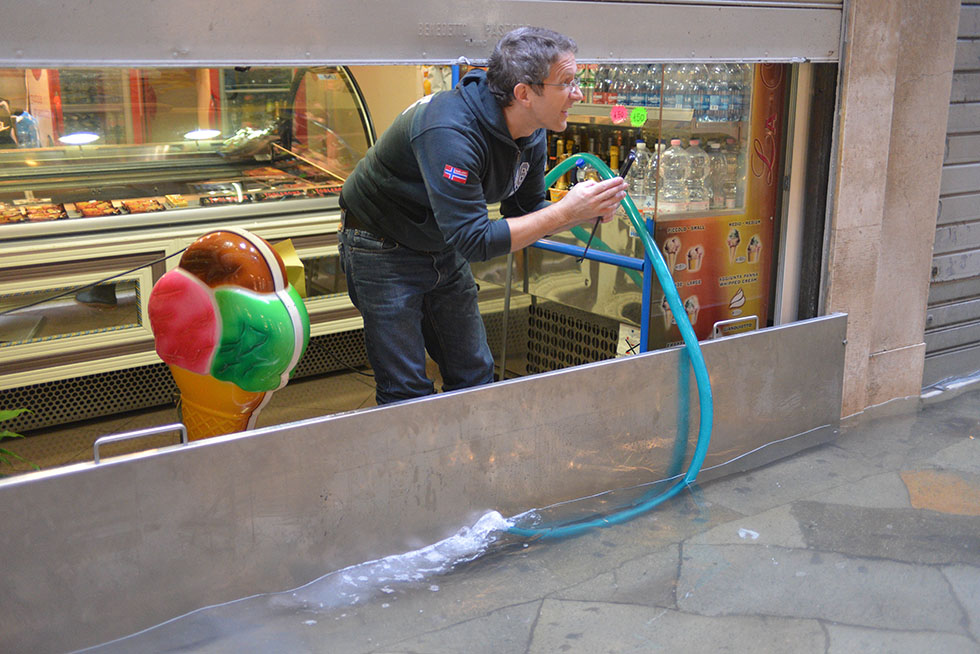
Quanto dura il fenomeno dell'acqua alta?
L'acqua alta segue il ciclo della marea (6 ore la marea cresce e le successive 6 cala): nei giorni un cui c'è acqua alta, questa dura solo per le ore centrali della fase crescente. Quindi solitamente l'acqua alta permane a Venezia per circa 3-4 ore. Subito dopo, una volta calata l'acqua, la città ritorna alla sua normalità.
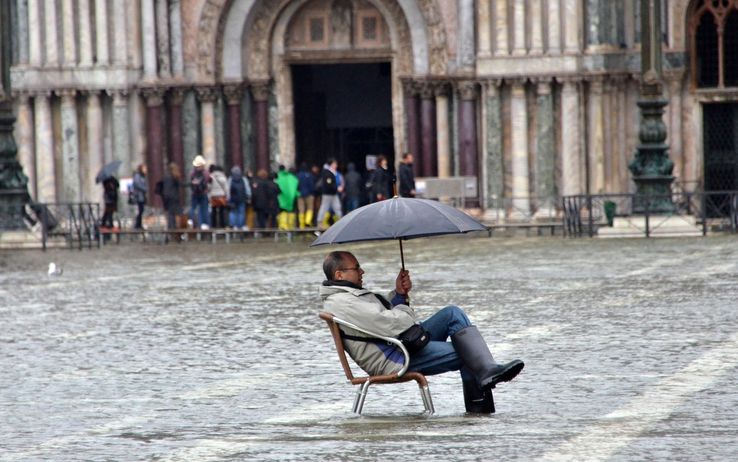
Ogni quanto viene l'acqua alta?
L'acqua alta è un fenomeno che si verifica solitamente nei mesi autunno-invernali, con maggiore probabilità tra novembre e dicembre. In questo periodo può succedere che solo in alcuni giorni si verifichi il fenomeno dell'acqua alta, spesso con un livello che interessa solo le parti più basse della città (Piazza San Marco).
Una marea eccezionale (maggiore di 140 cm) si presenta, statisticamente, 1 volta ogni 4 anni.
Per ulteriori informazioni sul fenomeno dell'acqua alta: CLICCA QUI
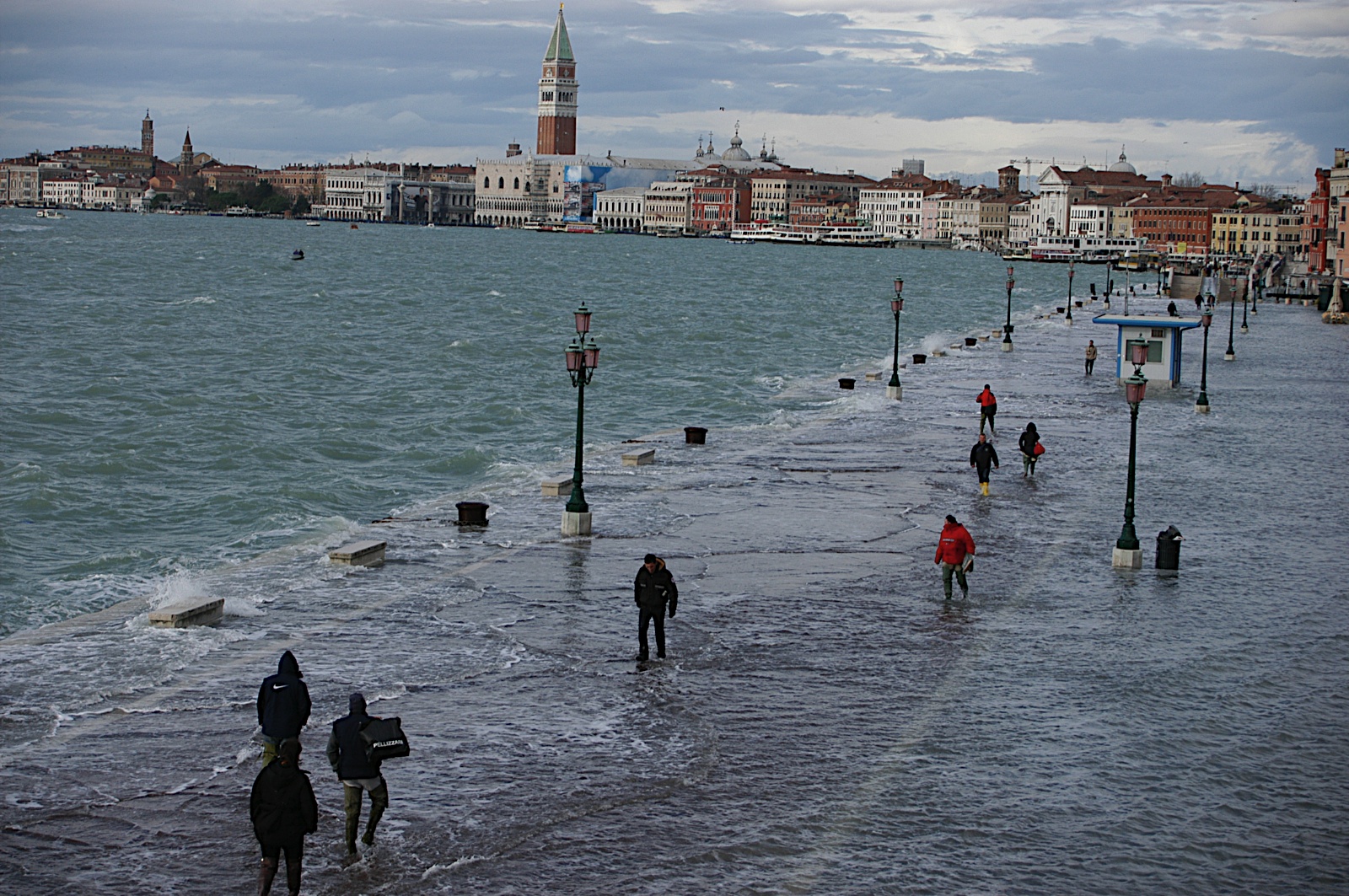
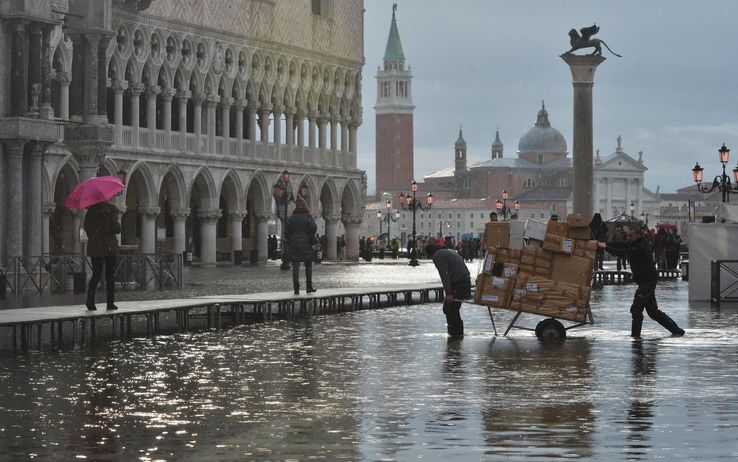
Per poter loggare la cache, rispondete a queste domande e mandate le risposte all'indirizzo mail del mio profilo. (se potete usate la chat e non la mail)
Se volete, potete loggare subito dopo l'invio delle risposte senza attendere la mia conferma. In caso le risposte dovessero essere errate vi contatterò
1. Quande ore dura "l'acqua alta"?
2. Da cosa è causato il fenomeno dell'acqua alta? (i due fattori)
3. Come si chiama il vento che favorisce l'acqua alta?
4. Quanto spesso avviene una "marea eccezionale"? (x volte ogni x anni)
5. Abbiamo detto che il vento inflenza molto il livello dell'acqua. Recati alle coordinate indicate. Guarda il mare di fronte a te. Come ti sembrano le acque? (poco mosse, calme, ecc)
6. Ora osserva la riva. L'acqua arriva al bordo e lo supera?
7. (facoltativo) Scatta una foto di te con il GPS (o cellulare) in mano nei pressi del GZ
Fonti: Wikipedia
ENGLISH
Venice is a "Big Fish". No, we're not talking about the famous Tim Burton's film "Big Fish."
Have you ever seen Venice from above? Looks just like a big fish.

THE HIGH WATER
IN VENICE
The term high water are shown in the Venice lagoon surges of tidal particularly pronounced, such as to cause flooding in the urban area. The phenomenon is especially common in the period between the fall and spring, when high tide comes to flood most of the city making it difficult journeys alleyways and squares.
The phenomenon of high water is generated by the combination of two main factors: the regular alternation of the tides combined with a cause meteorological composed by the combination of wind and atmospheric pressure on the mass marine; high tide alone does not generate the high water: is the overlap of these factors, combined with the astronomical tide, brings the water level to reach higher altitudes in a less predictable. The rise of the water over the tide level is a normal phenomenon in a closed basin such as the Adriatic sea and the wind favors him is not so much the bora, common in Venice, but the scirocco wind acting in the longitudinal direction over the entire mass water of the Adriatic. The excavation of the Canal of Petroleum and deepening the inlets (which increased the section of water exchange between the lagoon and the sea), have amplified the phenomenon, which in the past was an extraordinary event for the city. Although numerous works to cover (the "reclaimed") parts of the lagoon, for the construction of industrial zones, have reduced the flooded lagoon and then changed the behavior of the tides.
In order to combat the phenomenon of high water, since 2003 is in progress the MOSE project, which consists of a series of movable barriers consist of a variable number of gates anchored to the bottom of the inlets of the lagoon.

How long is the phenomenon of high?
High water follows the tidal cycle (6 hours the tide rises and subsequent falls 6): in the days when there is a high water, this only lasts for the middle of the growing phase. So usually the high water remains in Venice for about 3-4 hours. Immediately after, once water goes down, the city returns to its normal.

How often is the high water?
The high water is a phenomenon that occurs in autumn or winter seasons, most likely in November and December. In this period it is possible that only a few days to occur the phenomenon of high water, often with a level that affects only the lower parts of the city (Piazza San Marco).
An exceptional tide (greater than 140 cm) is presented, statistically, one time every four years.
For more information on the phenomenon of high water: CLICK HERE


To be able to log the cache, answer these questions and send the answers to the email address in my profile. (If you can, please use the chat and not the email)
If you want, you can logging immediately after sending the answers without waiting for my confirmation. If the answers were to be incorrect I will contact you
1. How many hours last the phenomenon of high?
2. What are causes the phenomenon of high water? (the two factors)
3. What is the name of the wind that favors high water?
4. How often takes an "exceptional tide"? (x time every x years)
5. We have said that the wind influence much the water level. Went to the coordinates. Watch the sea in front of you. How are the water in your opinion? (little moves, calm, etc.)
6. Now look at the shore. The water comes to the edge and it overflow?
7. (Optional) Take a picture of yourself with GPS (or cell phone) in your hand near the GZ
Sources: Wikipedia
